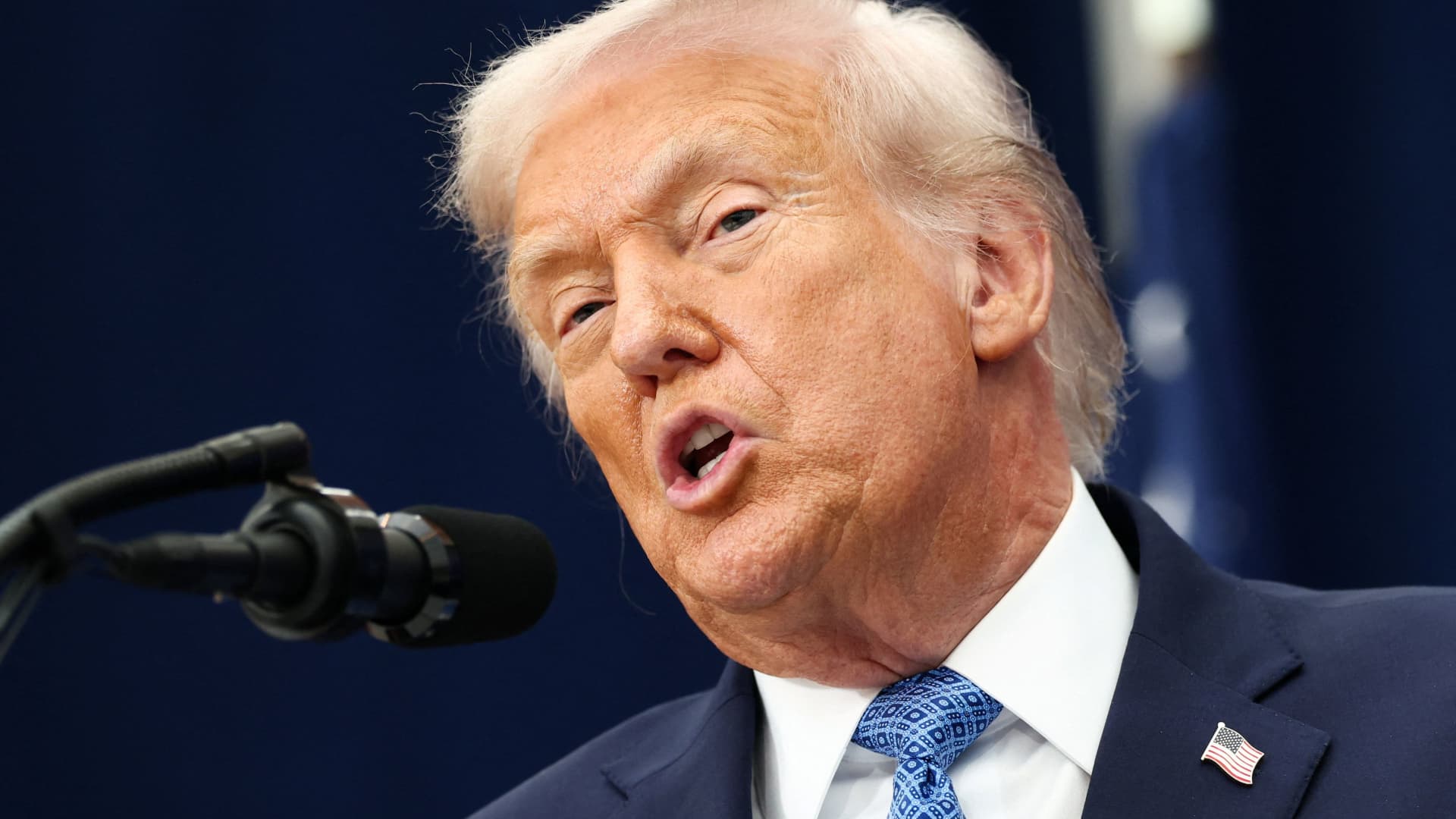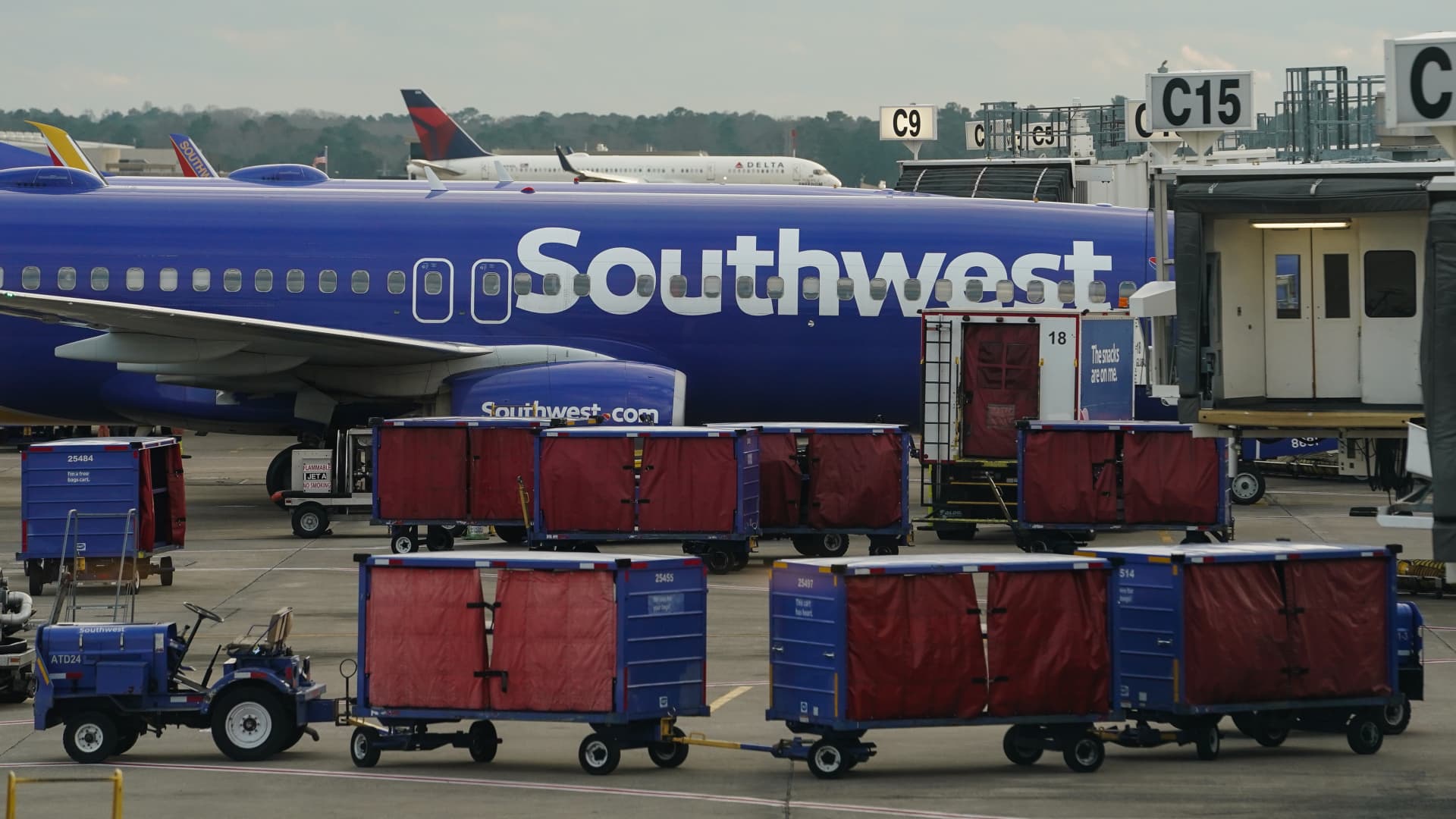The CVS pharmacy logo is seen outside of a storefront on August 07, 2024 in Austin, Texas.
Brandon Bell | Getty Images
CVS Health on Thursday reported second-quarter earnings and revenue that topped estimates and raised its adjusted profit outlook, as it sees strength in its retail pharmacy business and some improvement in its insurance unit.
Shares of the retail drugstore chain jumped more than 9% in premarket trading Thursday.
The company now expects fiscal 2025 adjusted earnings of $6.30 to $6.40 per share, up from previous guidance of $6 to $6.20 per share. CVS also cut its GAAP earnings guidance, without disclosing additional details.
In an interview, CVS CEO David Joyner said the quarterly beat and guidance hike is in part “a tribute to the work and the effort underway within Aetna,” the company’s insurer. He was referring to a “multi-year recovery effort” at Aetna, which has been grappling with higher medical costs in privately run Medicare plans like the rest of the insurance industry.
Joyner added that CVS’ retail pharmacy business is “performing really well,” demonstrating the company’s efforts to introduce new technology that improves pharmacy operations and drives efficiency. He also pointed to the company’s investments in labor and its new prescription drug pricing model, which has benefited payers and “separated the pharmacy from the pack.”
But the company’s release said the strength in those two business units was offset by a decline in its health services segment.
The results cap off the third full quarter with Joyner, a longtime CVS executive, as chief executive of the retail drugstore chain. Joyner succeeded Karen Lynch in mid-October, as CVS struggled to drive higher profits and improve its stock performance.
Here’s what CVS reported for the second quarter compared with what Wall Street was expecting, based on a survey of analysts by LSEG:
- Earnings per share: $1.81 adjusted vs. $1.46 per share expected
- Revenue: $98.92 billion vs. $94.50 billion expected
The company posted net income of $1.02 billion, or 80 cents per share, for the first quarter. That compares with net income of $1.77 billion, or $1.41 per share, for the year-earlier period.
Excluding certain items, such as amortization of intangible assets, restructuring charges and capital losses, adjusted earnings were $1.81 per share for the quarter.
CVS booked sales of $98.92 billion for the first quarter, up 8.4% from the same period a year ago due to growth across all three of its business segments.
As part of a broader turnaround plan, the company is pursuing $2 billion in cost cuts over the next several years. Joyner told CNBC that the company still has to close a few more locations as part of reaching that target.
But he said CVS is also “focusing on being in the right geography,” noting that the company is still buying stores in the Pacific Northwest because it doesn’t have a big footprint there.
Pressure in insurance unit
All three of CVS’ business segments beat Wall Street’s revenue expectations for the second quarter. But the company’s insurance unit is still under pressure.
Aetna and other insurers have grappled with higher-than-expected medical costs over the last year as more Medicare Advantage patients return to hospitals for procedures they delayed during the pandemic.
The insurance unit’s medical benefit ratio – a measure of total medical expenses paid relative to premiums collected – increased to 89.9% from 89.6% a year earlier. A lower ratio typically indicates that a company collected more in premiums than it paid out in benefits, resulting in higher profitability.
The company said that the increase was driven by a charge of $471 million from a so-called premium deficiency reserve, which is related to anticipated losses in the 2025 coverage year. That refers to a liability that an insurer may need to cover if future premiums are not enough to pay for anticipated claims and expenses.
The second-quarter ratio was lower than the 90.6% that analysts were expecting, according to StreetAccount estimates.
The insurance business booked $36.26 billion in revenue during the quarter, up more than 11% from the second quarter of 2024. Analysts expected the unit to take in $34.59 billion for the period, according to estimates from StreetAccount.
CVS’ pharmacy and consumer wellness division booked $33.58 billion in sales for the second quarter, up more than 12% from the same period a year earlier. The company said the increase was partly driven by higher volume at the pharmacy and the front of store, but offset by pharmacy reimbursement pressure.
Analysts expected sales of $31.98 billion for the quarter, StreetAccount said.
That unit dispenses prescriptions in CVS’ more than 9,000 retail pharmacies and provides other pharmacy services, such as vaccinations and diagnostic testing.
CVS’ health services segment generated $46.45 billion in revenue for the quarter, up more than 10% compared with the same quarter in 2024. Analysts expected the unit to post $43.37 billion in sales for the period, according to StreetAccount.
That unit includes Caremark, one of the nation’s largest pharmacy benefit managers. Caremark negotiates drug discounts with manufacturers on behalf of insurance plans and creates lists of medications, or formularies, that are covered by insurance and reimburses pharmacies for prescriptions.












